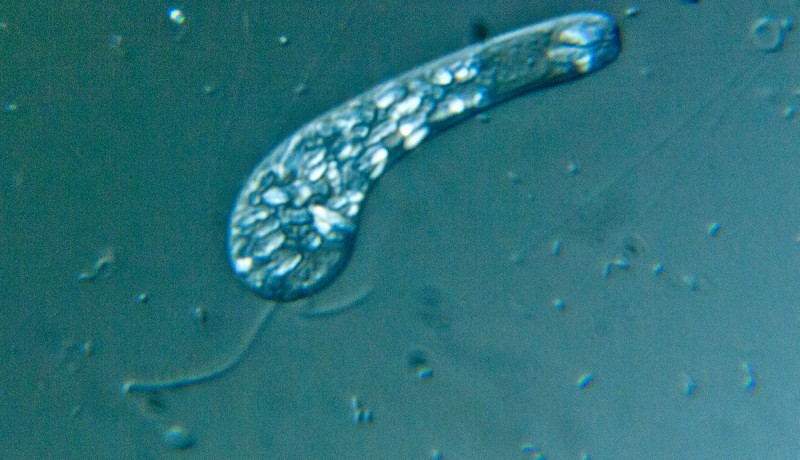How do microscopic cells swim? Research could solve human diseases
Watson College associate professor wins NSF funding to study flow patterns of flagella and cilia on algae

Flagella and cilia — tiny hair-like structures on the surface of many types of bacteria, protozoa and other microorganisms as well as cells of human tissues — beat rhythmically to provide propulsion in fluid environments. Without them, necessary transport functions inside living cells would be subject to the whims of chance.
Despite the importance of flagella and cilia in the food chain and the reproductive cycle, the biomechanics behind them are poorly understood. Researchers from Binghamton University’s Thomas J. Watson College of Engineering and Applied Science and the University of Minnesota aim to use state-of-the-art microscopy techniques and machine-learning-enhanced computational modeling to fill in some of those knowledge gaps.
Xin Yong, an associate professor in the Department of Mechanical Engineering, recently received a $297,217 grant from the National Science Foundation to investigate the flow field of healthy flagella as well as those of mutant flagella related to human diseases. He will collaborate with Professor Xiang Cheng from the University of Minnesota Twin Cities.
They will observe algae commonly found in lakes or ponds for insights into how small organisms swim in fluid at a very low speed. Algae move using two flapping flagella, like microscopic humans doing the breaststroke. Several studies have measured the flow field in two dimensions, but that offers only a top-down perspective and does not reflect the three-dimensional flow fields surrounding free-swimming algae. This new research will offer a large amount of 3D flow data to help create a new minimalist numerical model of swimming algae.
“We want to combine experimental technique and theoretical study to understand the flow structures surrounding these organisms,” Yong said. “The long-term vision is that it will help us to understand how two algae interact when they are near each other and then further extrapolate that to how a large number of algae move collectively within a pretty crowded water body to contribute to our understanding of the onset of algae blooms and similar problems.”
As head of the Soft Matter and Interfacial Phenomena Lab, Yong has researched how different phases of matter interact when they meet — liquids and solids, for example, or liquids and gases — and how those behaviors affect materials transport at micro- or nanoscales.
“There are a lot of people in fluid mechanics who want to understand high-speed flows — like those around airplanes or rockets,” he said. “My interest is on the other end of the spectrum, which is very low speed and how small things flow in, how they move and how they swim in those types of environments.”
Studying biological processes is new for him, but he sees algae as a model organism with a filament similar to some human cells. He hopes to find a solution for the flow deficiency of malfunctioning flagella.
“There are a lot of systems in our bodies that resemble these filaments — for example, our lungs use similar filaments to clear mucus and other things,” he said. “A lot of organs in the human body use these beating filaments, and their dysfunction can lead to severe diseases. This fundamental study will be useful for developing new treatments.”
